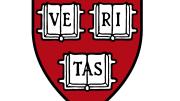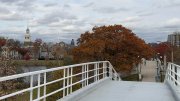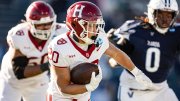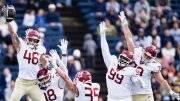Of the 2,029 students offered admission to the Harvard College class of 2017 (a mere 5.8 percent of the 35,023-strong applicant pool), 82 percent have said yes, the College’s Office of Admissions and Financial Aid announced today. That “yield”—the highest since acceptances to the class of 1973 arrived in Cambridge more than 40 years ago—means the incoming freshman class is currently full, although administrators said a small number of additional students might be admitted from the waiting list later this month or in June.
The high yield was especially gratifying given the cancellation of Visitas, the “pre-frosh” weekend of events, scheduled for April 20-22 this year, that is designed to introduce admitted students to the College. The search for the second Boston Marathon bombing suspect forced Harvard officials to cancel the program when Greater Boston was locked down on April 19, but an undaunted contingent of students, faculty members, and administrators pulled off a Virtual Visitas instead. “Even at this difficult time,” noted dean of admissions and financial aid William R. Fitzsimmons in today’s announcement, “our undergraduates immediately reached out to prospective members of the Class of 2017 through social media, demonstrating a spontaneous devotion to Harvard that had a powerful effect on students’ decisions to come to Harvard. Their concern for the students who were unable to visit Harvard was evident—and their outreach was especially appreciated, given the extraordinary circumstances of the tragedy that had occurred in Boston.”
In its snapshot of the new class, the admissions office noted:
At this time, men make up 52.4 percent of the class. Prospective social science concentrators constitute 28.3 percent, with 24.3 percent interested in the biological sciences, 18 percent in the humanities, 13.3 percent in engineering and computer science, 8.4 percent in the physical sciences, 7 percent in mathematics, and 0.7 percent undecided. African-Americans make up 9.4 percent of the class, Asian-Americans 20.9 percent, Latinos 10 percent, and Native Americans and Native Hawaiians 2.3 percent. International students constitute 11.1 percent of the class.
For additional details, read the official announcement here.









